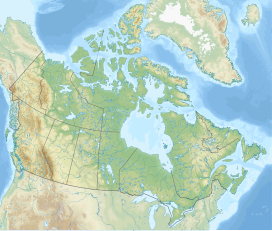| Old Man On His Back Plateau | |
|---|---|
| Highest point | |
| Elevation | 1,005 m (3,297 ft) |
| Coordinates | 49°12′26″N109°13′51″W / 49.2071°N 109.2309°W |
| Dimensions | |
| Length | 12.9 km (8 mi)East-southeast |
| Geography | |
| Country | Canada |
| Province | Saskatchewan |
| Rural municipalities | |
| Parent range | Missouri Coteau |
| Geology | |
| Mountain type | Morainic |
| Rock type | Sandstone |
Old Man On His Back Plateau [1] is a small, oval-shaped plateau in the south-western region of the Canadian province of Saskatchewan. [2] It is situated south of the Cypress Hills and north of the border with the U.S. state of Montana in one of the most arid places in Saskatchewan. The landscape is that of semi-arid grasslands and rolling morainic hills. It is almost 13 kilometres (8 mi) long at its widest point and has an elevation of just over 1,000 metres (3,300 ft). The plateau's name originates due to when being viewed from the north-west, it resembles the silhouette of an old fat man lying on his back with his knees drawn up. [3]
Contents
Old Man On His Back Plateau is in the RMs of Frontier No. 19 and Reno No. 51. Access is from the Claydon Grid Rd that runs 15 kilometres (9.3 mi) west from Claydon and Divide Rd which runs north from Divide. Highway 18 services both Claydon and Divide. [4]
The Nature Conservancy of Canada's Old Man on His Back Prairie and Heritage Conservation Area, founded in 1995, covers much of the plateau and surrounding grasslands. A heard of pure plains bison were introduced to the conservation area in 2003. In 2015, the site was designated a dark-sky preserve by the Royal Astronomical Society of Canada. It was the society's second such preserve and the Nature Conservancy of Canada's first. [5]

